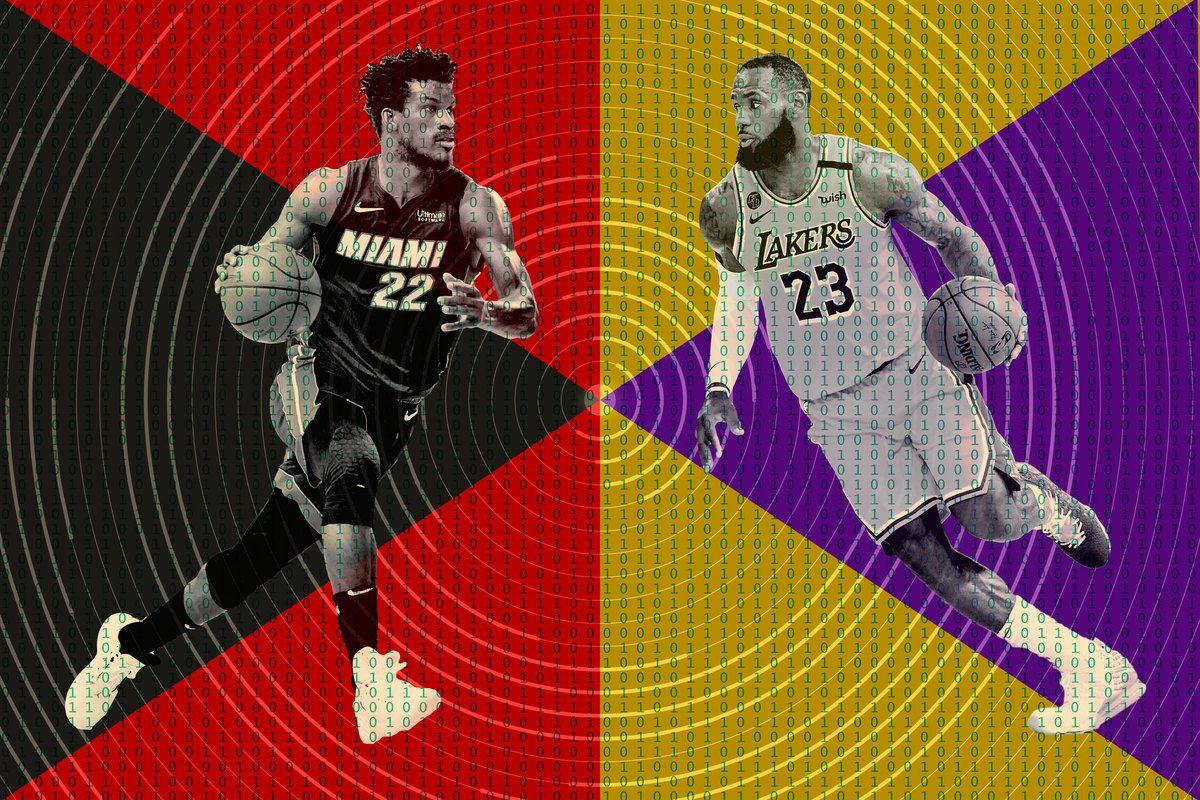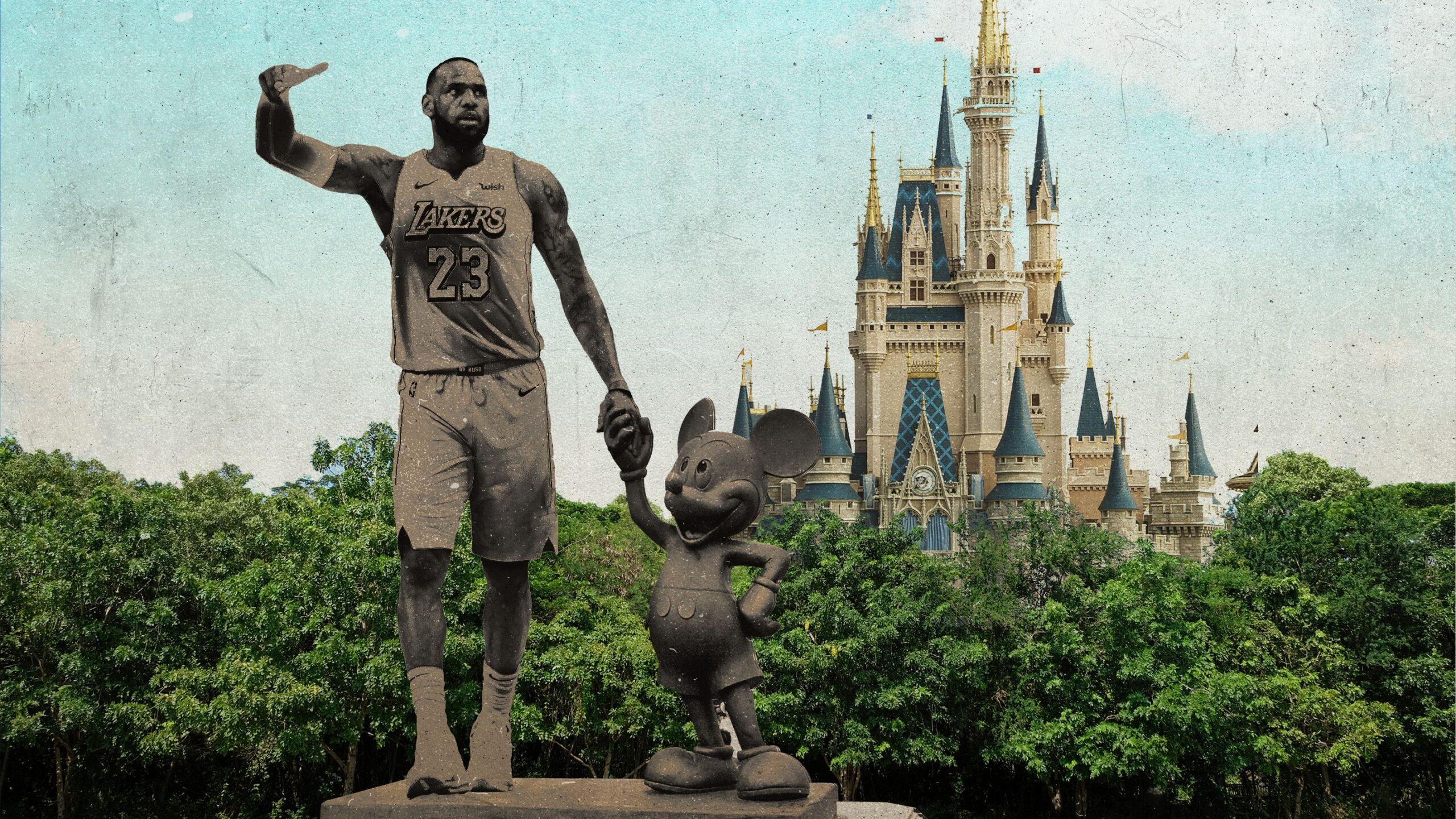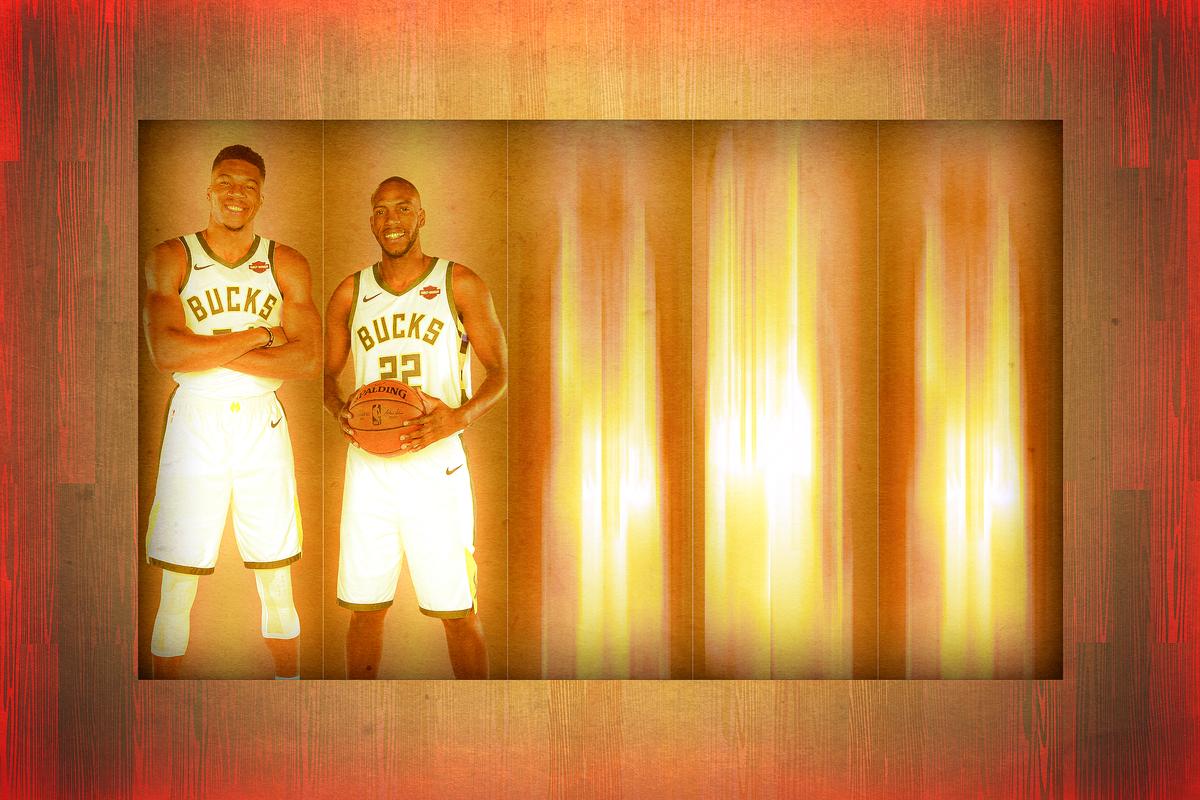
Midway through overtime of Saturday night’s marquee game, ESPN analyst Jeff Van Gundy observed that while the Bucks trailed an incandescent Luka Doncic and the Mavericks, the experience was still a positive for Milwaukee. “Milwaukee didn’t play many close games,” he said about the NBA’s best team this season. “This is good for them—tight game, pressure free throws, have to execute late at both ends.”
The Bucks didn’t just avoid close games compared to other teams this season; they did so by a historic margin. The 2019-20 Bucks have played the fewest clutch minutes for any team since the NBA Advanced Stats database began in 1996-97, with “clutch” defined as situations when the score is within five points in the last five minutes of a game. Even after adjusting for games played, that statement is still true.
Teams without many clutch minutes have typically been so dominant that they didn’t face much fourth-quarter trouble, or so terrible that they were rarely close enough to force clutch possessions. Here are the top (or bottom) 10 in that span.
Fewest Clutch Minutes Per Team Game, 1996-97 to Present
A lack of clutch experience isn’t necessarily a problem for the playoffs. The 2014-15 and 2016-17 Warriors went a combined 12-3 in “clutch” playoff games in their respective title runs. And these Bucks, for whatever it’s worth, have ranked among the best clutch teams this season, with a league-best winning percentage in those games and the no. 4 net rating.
But that lack of clutch opportunity also means the Bucks haven’t had much time to assess their various lineup combinations in late-game situations. Giannis Antetokounmpo has played the most clutch minutes on the team—but he’s also played as many clutch minutes this season (55) as Kyrie Irving, who’s been hurt basically all season, and fewer than 150 other players. Eight different Bucks have played at least a third of the team’s available clutch minutes this season, and that list doesn’t include midseason addition Marvin Williams, who’s now part of the late-game rotation:
- Giannis Antetokounmpo (74 percent of possible clutch minutes)
- George Hill (69)
- Khris Middleton (66)
- Brook Lopez (53)
- Eric Bledsoe (47)
- Donte DiVincenzo (45)
- Wesley Matthews (39)
- Pat Connaughton (38)
So it’s still unclear where coach Mike Budenholzer will turn in a close game with the Bucks’ season on the line. He could play Giannis, Lopez, and Bledsoe all together for stout defense, but run the risk of cramped offensive sets as defenses shade away from that trio on the perimeter. He could go smaller, with Giannis at center and four zippier players orbiting his dominant paint presence. He could turn to veterans or youth; he could play with a traditional lead guard or none at all; he could stick with the same five players or make frequent substitutions depending on the score and opponent. The wealth of options represents a potential strength, particularly if some rotation players suffer injuries as the playoffs progress, but it also represents a potential area of instability.
Let’s look at the same clutch question for the other dozen teams that our Restart Odds project with a reasonable chance to reach at least the second round of the playoffs. We’ll sort the teams into a handful of different categories based on their clutch lineup situation, as well as identify the players who have taken at least 20 percent of the possible clutch minutes this season. One broad takeaway before we begin: The Bucks aren’t alone in their uncertainty. For as much as folks talk about coaches needing to know the five players they trust at the end of games, very few actually have strictly defined clutch lineups as the 2019-20 postseason beckons.
(All statistics through Saturday’s games. Players in italics are no longer with the team this season, whether due to trade, injury, or bubble opt-out.)
Know the Five, No Questions Necessary
Oklahoma City Thunder (plus-26.8 clutch net rating, no. 1 in the league)
- Chris Paul (94 percent)
- Shai Gilgeous-Alexander (93)
- Danilo Gallinari (81)
- Steven Adams (78)
- Dennis Schröder (70)
- Terrance Ferguson (37)
Five Thunder players have appeared in a supermajority of available clutch minutes, and it’s easy to understand why: That quintet has outscored opponents by 29.9 points per 100 possessions this season—best in the league by seven points (minimum 100 minutes). As Ringer teammate Kevin O’Connor noted before the restart, the Thunder blitz their opponents when Paul, Gilgeous-Alexander, and Schröder share the floor, but are average or worse in all other scenarios. The only question would come in a matchup against a team like the Clippers with multiple All-Star wings, which could force the fast-rising Luguentz Dort (13 percent of clutch minutes) into the clutch rotation.
Utah Jazz (plus-11.2, no. 6)
- Donovan Mitchell (96 percent)
- Rudy Gobert (91)
- Bojan Bogdanovic (81)
- Joe Ingles (78)
- Royce O’Neale (77)
- Mike Conley (58)
With Bogdanovic out for the season, there’s no real decision for Utah coach Quin Snyder: Besides these six players, no other Jazz man has played even 10 percent of the team’s available clutch minutes this season. Utah’s going to stick with this group—which features plenty of overlapping skill sets via a couple of ace defenders, a couple of creators, and a couple of shooters—in the playoffs.
Six Guys, Five Spots
Boston Celtics (plus-2.5, no. 13)
- Jayson Tatum (94 percent)
- Marcus Smart (82)
- Jaylen Brown (67)
- Daniel Theis (66)
- Gordon Hayward (65)
- Kemba Walker (60)
Do the Celtics keep Theis on the floor at the end of games, thus pushing one of their wings or guards to the bench? Or do they embrace total modernity like the next team on this list and play without a single traditional big? Tatum, Smart, Brown, Hayward, and Walker have shared the court for just 18 minutes this season, but theoretically this group fills the floor with capable creators and fearsome slashers and switchable defenders. Against a team like Philadelphia, with Joel Embiid, maybe that lineup falters on the defensive end—but against the Raptors or Bucks? Brad Stevens might have to experiment to find his team’s ceiling.
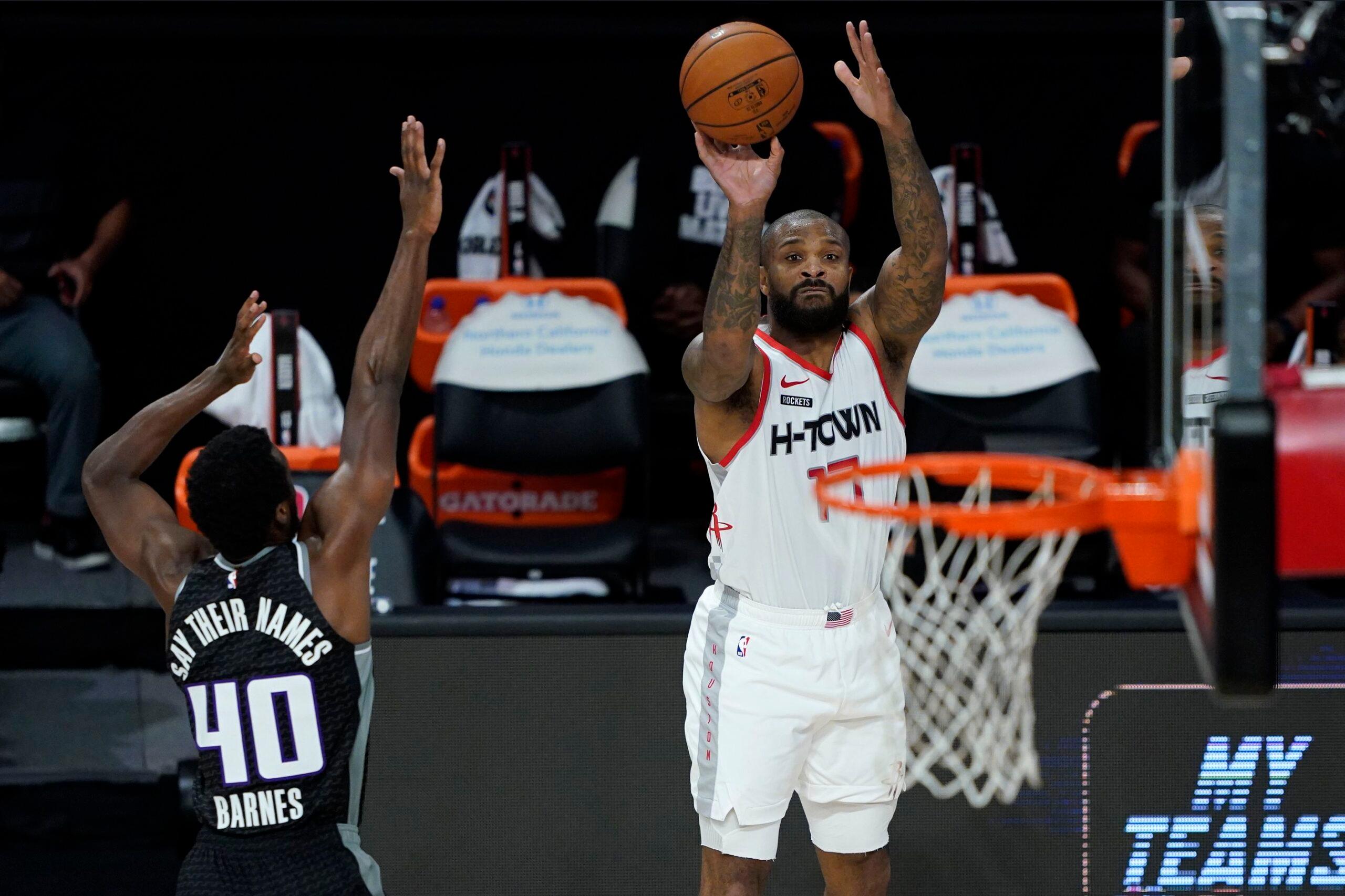
Houston Rockets (plus-20.2, no. 2)
- P.J. Tucker (100 percent)
- James Harden (97)
- Russell Westbrook (96)
- Danuel House Jr. (50)
- Clint Capela (44)
- Robert Covington (33)
- Eric Gordon (30)
- Austin Rivers (25)
- Ben McLemore (20)
The Rockets have more than six names listed here, but Mike D’Antoni effectively has six main options to choose from at the end of games: Capela was traded in February, and it will be difficult for Rivers or McLemore to play their way into crunch time ahead of the others on this list. Gordon hasn’t played yet in the bubble after suffering an ankle injury in a scrimmage, but he should return before the playoffs, and it’s likely that the Rockets go with Tucker, Harden, Westbrook, and two out of House, Covington, and Gordon at the end of games. No matter the selection, they’ll have ample shooting and ample post defense (despite little size). Note the indefatigable Tucker in particular—the only player in the league with 100 percent of available clutch minutes played.
Dallas Mavericks (minus-11.2, no. 23)
- Luka Doncic (79 percent)
- Dorian Finney-Smith (78)
- Kristaps Porzingis (70)
- Tim Hardaway Jr. (69)
- Maxi Kleber (64)
- Seth Curry (45)
- Delon Wright (34)
- Jalen Brunson (24)
With Brunson out for the season and Wright not much of a factor at the end of recent games—he’s played just eight of 27 possible clutch minutes in the bubble—the Mavericks typically operate with a main quintet, with Curry available in case they need an extra shooter. The advantage of using Porzingis and Kleber as bigs is that Dallas can still space the floor on offense while retaining size on the other end. Of course, that hasn’t helped the team in actual clutch situations: It’s the worst contender by a number of measures—including ranking 27th in clutch offense and tying for the league-worst record in games decided by three points or fewer. But clutch performance in the regular season hasn’t carried over to the playoffs historically, so Dallas still has an opportunity to translate its on-paper fit to the actual court.
Dealing With Injury Complications
Philadelphia 76ers (plus-7.8, no. 9)
- Tobias Harris (98 percent)
- Ben Simmons (79)
- Josh Richardson (75)
- Al Horford (68)
- Joel Embiid (65)
- Matisse Thybulle (24)
- Furkan Korkmaz (20)
These numbers sure make it seem like Philadelphia has its clutch lineup figured out; look at that gap in minutes percentage between no. 5 Embiid and no. 6 Thybulle. But with Simmons likely out for the season, and Embiid sidelined for the moment, the 76ers’ plans are thrown into disarray. Now, they probably will use Shake Milton (16 percent of possible clutch minutes) as the late-game point guard, but the Milton-Richardson-Harris-Horford-Embiid lineup has played just 53 minutes all season. Swapping in Milton for Simmons at least relaxes some of the offensive squeeze brought on by playing three non-shooters together, but it’s obviously a poor trade-off overall. The 76ers might not have been able to make a meaningful playoff run even with Simmons, but without him, their chances are slim at best.
Indiana Pacers (plus-9.9, no. 8)
- T.J. Warren (89 percent)
- Domantas Sabonis (78)
- Myles Turner (75)
- Malcolm Brogdon (71)
- Jeremy Lamb (57)
- Aaron Holiday (47)
- Justin Holiday (39)
- Victor Oladipo (23)
If Sabonis can return this season from the foot injury that has him sidelined at the moment, the Pacers’ end-of-game lineup works 1 through 5. Oladipo, whose number here is so low because of all the time he missed due to injury, would slot into the backcourt next to Brogdon, leaving a Warren-Sabonis-Turner frontcourt. But without Sabonis, Nate McMillan’s choices are less clear, and the team hasn’t participated in enough close games in the bubble to illuminate his intentions. Which Holiday does he play? Does the team have enough size on defense if Warren stays at the 4 in Sabonis’s stead? And do any of these strategic considerations even matter if Warren continues his transformation into Michael Jordan as a scorer?
Denver Nuggets (plus-12.4, no. 5)
- Nikola Jokic (96 percent)
- Jamal Murray (71)
- Gary Harris (66)
- Will Barton (63)
- Jerami Grant (55)
- Paul Millsap (37)
- Monte Morris (30)
- Torrey Craig (27)
- Michael Porter Jr. (20)
Murray, Harris, and Barton have played a combined one game in the bubble. So beyond Jokic and Murray, who returned to the lineup over the weekend, the Nuggets’ clutch minutes are completely up in the air. In their double-overtime victory against the Jazz on Saturday, they went with Morris, Grant, and Porter for the other three spots for most of the endgame (Craig also made an appearance), and Porter has certainly earned more playing time given his recent offensive explosions. Given better health for his team, Mike Malone could make late-game lineup decisions based on the score—playing Porter when he needs a bucket and Millsap when he needs a stop, for instance.
How Big Is Too Big?
Los Angeles Lakers (plus-3.8, no. 12)
- LeBron James (97 percent)
- Anthony Davis (88)
- Kentavious Caldwell-Pope (75)
- Danny Green (50)
- Alex Caruso (45)
- Dwight Howard (39)
- Kyle Kuzma (31)
- Avery Bradley (31)
- Rajon Rondo (24)
Almost as important as the names that appear on these individual team lists are the names that don’t. For the Lakers, starting center JaVale McGee has barely played in clutch situations this season; when Frank Vogel needs an extra big next to James and Davis, he calls on Howard instead. Also notable here are the relatively low totals for Bradley and Rondo; the former won’t play this postseason after opting out of the bubble, while the latter should return at some point from a hand injury but might not figure into most clutch situations anyway.
The big question for the Lakers is, well, how big to go. A lineup with James, Davis, and Howard might yield untenable spacing. We at The Ringer have long advocated Davis-at-center lineups, and Vogel has mostly complied in late-game situations, surrounding James and Davis with three wings. Kuzma’s solid play in the bubble raises the likelihood that he would figure into the clutch rotation, though there are also spacing and defensive questions with his insertion to the lineup.
Toronto Raptors (plus-18.0, no. 3)
- Kyle Lowry (90 percent)
- OG Anunoby (72)
- Pascal Siakam (66)
- Fred VanVleet (63)
- Serge Ibaka (53)
- Norman Powell (43)
- Marc Gasol (36)
- Patrick McCaw (25)
- Terence Davis (21)
Looking just at the minutes distribution here, it appears that the Raptors have a main clutch five with a few alternate options: Powell if they need another stout wing, Gasol if they need another big. But injuries have limited Gasol’s availability this season; in last season’s playoffs, as the Raptors won the title, Gasol played the second-most clutch minutes on the team. (The top five, in order, were Kawhi Leonard, Gasol, Siakam, Lowry, and VanVleet.) That precedent suggests Gasol will replace Ibaka in the main five, but given Nick Nurse’s predilection for unpredictability, it feels foolish to make any prediction about Toronto’s rotation.
With any other team, for instance, it would be outlandish to suggest a possible lineup as big as one with Siakam, Anunoby, Ibaka, and Gasol all playing at once—and indeed, that quartet has shared the floor for just 31 minutes this season. It’s also allowed a comical 92.4 points per 100 possessions, and while that’s too small a sample to analyze with certainty, it’s also difficult to imagine any team running an effective offense against that foursome plus Lowry. Anunoby is the wild card here, after he missed the entire 2019 postseason due to injury: If he can’t fit next to Siakam and another big against top playoff defenses, Nurse’s appetite for experimentation might shrink along with the Raptors’ half-court production.
Two Definites Plus a Wealth of Options
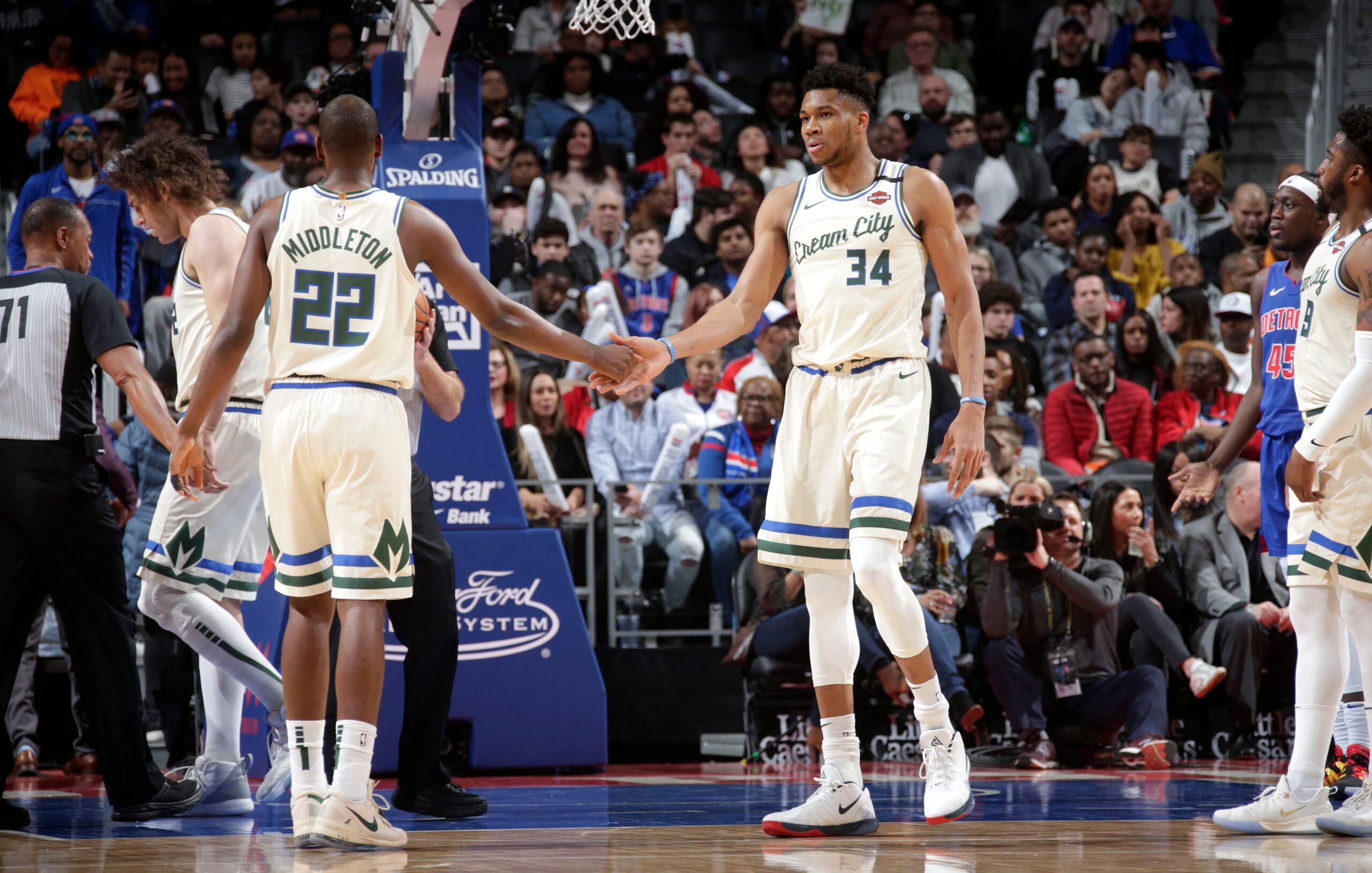
Milwaukee Bucks (plus-14.8, no. 4)
We covered the Bucks up above: Antetokounmpo and Middleton are natural choices to play in every late-game situation, but depending on the situation, Budenholzer has plenty of options to fill out the rest of the lineup.
Miami Heat (minus-12.4, no. 24)
- Bam Adebayo (97 percent)
- Jimmy Butler (70)
- Kendrick Nunn (54)
- Duncan Robinson (53)
- Goran Dragic (51)
- Derrick Jones Jr. (46)
- Tyler Herro (42)
- Jae Crowder (25)
Miami has the most obvious offense/defense trade-off in the league. Adebayo and Butler are sure to play at the end of games—but who surrounds them? Do the likes of Robinson, Dragic, and Herro play to juice the offense? Or do Jones, Crowder, and Andre Iguodala (11 percent of all clutch minutes, though he joined the team late in the season) form a rangy, long-armed defensive phalanx? Or what about players not even on this list, like Kelly Olynyk, who’s played more at the end of games in the bubble?
As this minutes allocation suggests, Erik Spoelstra likes Adebayo-at-center lineups more than any other combination; he even moved Adebayo into the starting center spot after the restart, despite mostly positive numbers for the Adebayo–Meyers Leonard frontcourt. But one wrinkle to watch is that the Heat could hew dangerously close to a 76ers-esque cramping of the floor with Adebayo, who’s attempted just 14 3-pointers all season, and the surprisingly shot-averse Butler, who’s made multiple 3s in a game just once since early December and hasn’t even attempted one yet in two games in the bubble. Adding Iguodala and Crowder for defensive purposes could grind the offense to a complete halt.
Los Angeles Clippers (plus-5.7, no. 10)
- Montrezl Harrell (86 percent)
- Lou Williams (72)
- Kawhi Leonard (68)
- Landry Shamet (53)
- Paul George (51)
- Patrick Beverley (47)
- JaMychal Green (31)
- Marcus Morris (23)
- Maurice Harkless (21)
Take the Clippers’ specific numbers with a large grain of salt because of Leonard’s and George’s absences all season. Instead, note how varied Doc Rivers’s options are outside that top two. In the backcourt, Williams, Shamet, and Beverley all have clutch experience and could easily engage in situational swaps, with Williams entering on key offensive possessions and Beverley on the other end. (One imagines playoff opponents would target Williams mercilessly when they have the ball, rather than attack Leonard or George.)
The frontcourt situation is also in flux. Like the Lakers’ McGee, Ivica Zubac is a starter but not a closer for his team; even with Harrell out in the bubble thus far, he’s split time with Green at the center spot at the end of games. Morris should receive plenty of clutch playing time, as well; his number here would be much higher had he spent all season with the team. But this list underscores Harrell’s importance to this team; the Sixth Man of the Year favorite hasn’t played yet this summer as he mourns the death of his grandmother. He expects to travel to Orlando next week, and will return to the court and help solidify the Clippers’ late-game rotation once there.

